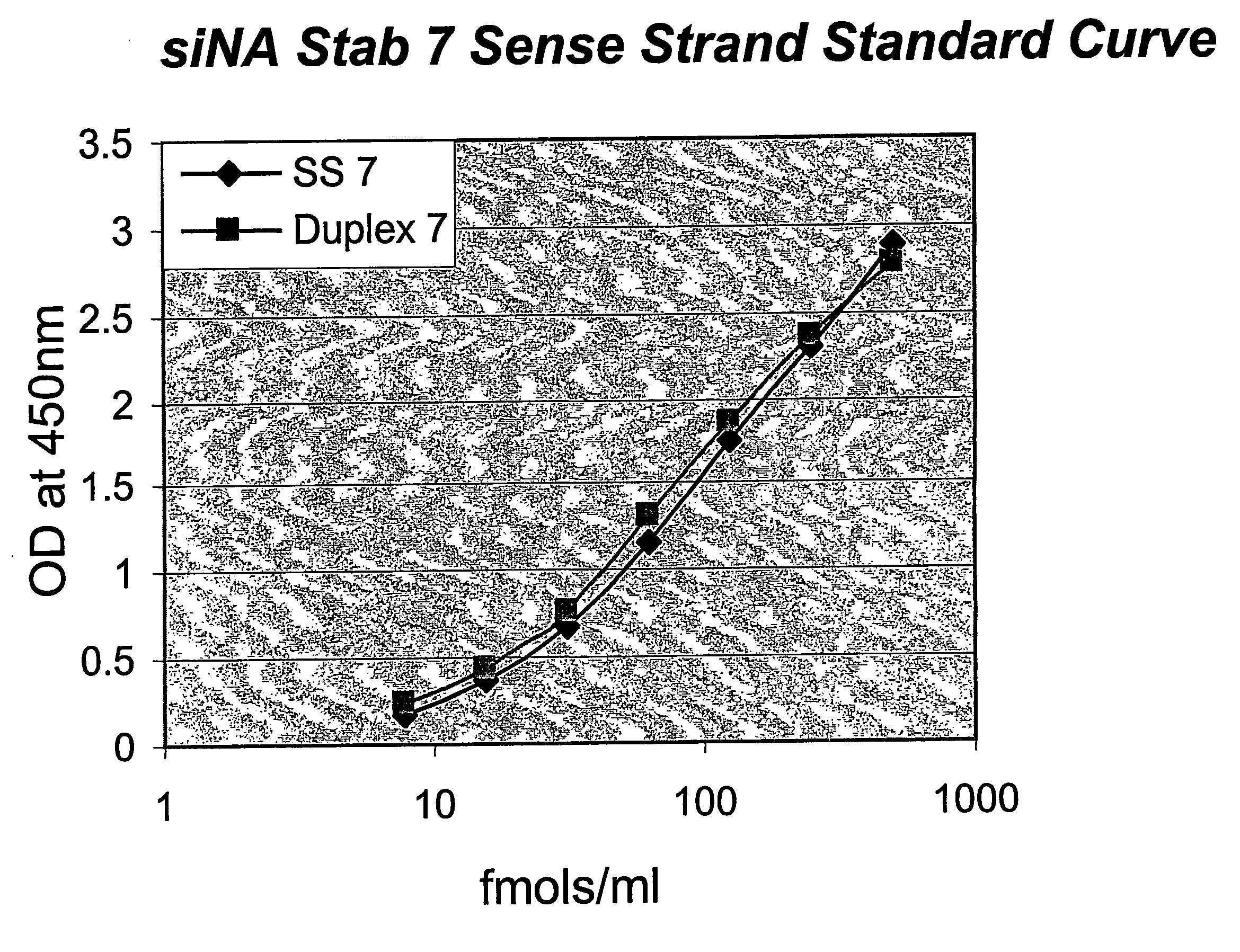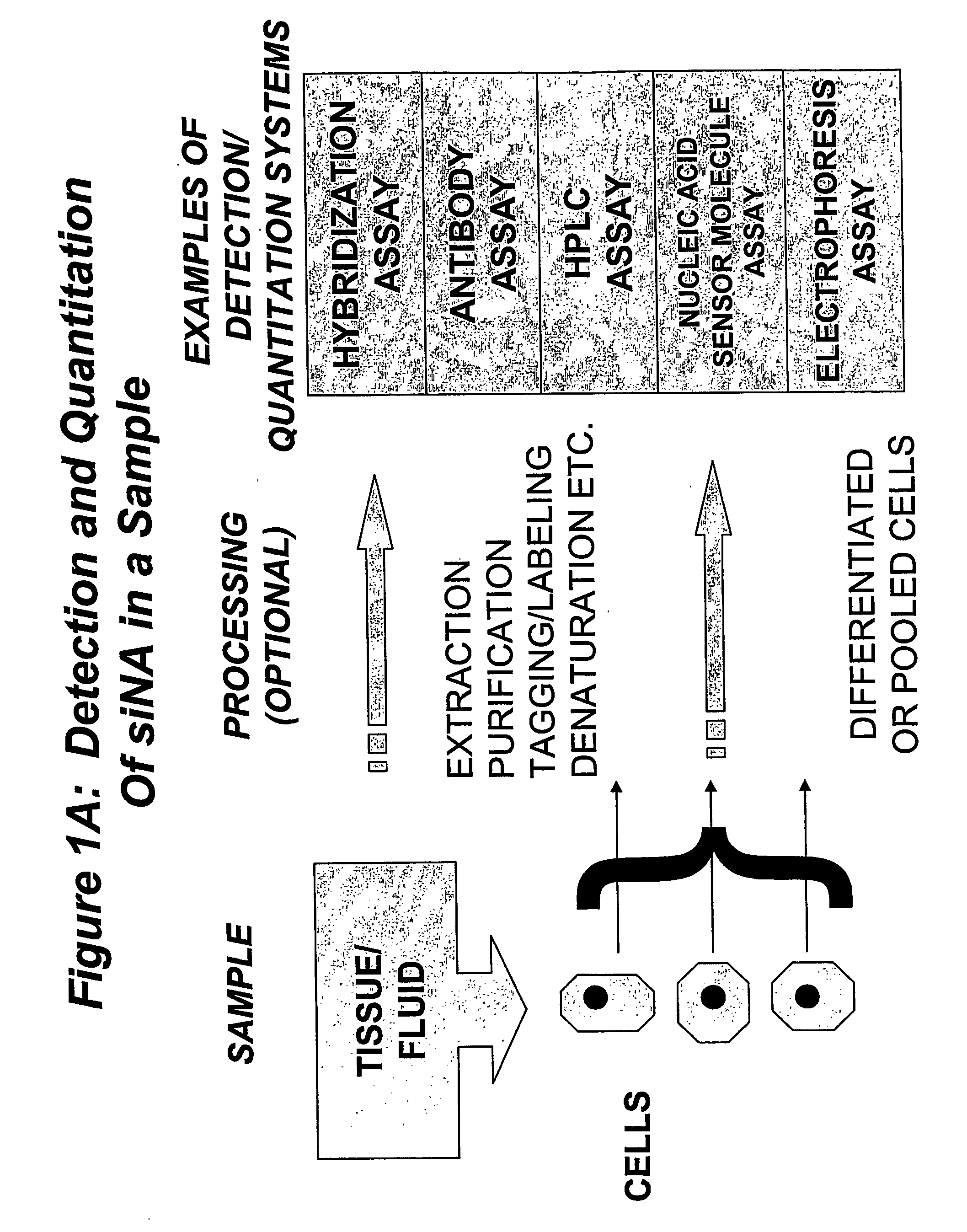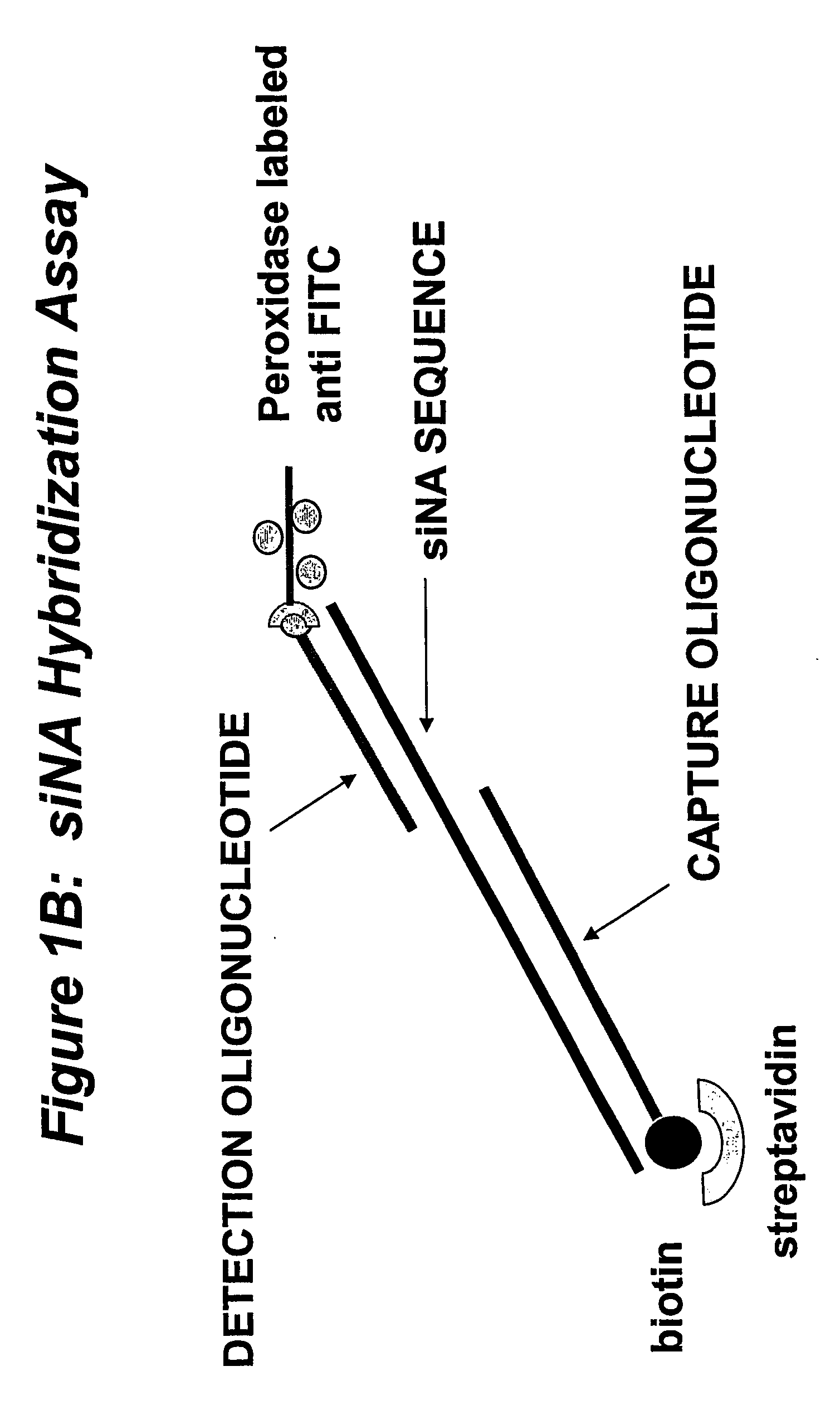Detection and Quantitation of Nucleic Acid Molecules in Biological Samples
a nucleic acid and biological sample technology, applied in the field of detection and quantitation of nucleic acid molecules, polynucleotides, and/or oligonucleotides in samples, can solve the problems of limited assay sensitivity, limited use of radio-labeled nucleotides, and limited sensitivity, so as to improve the cellular uptake and various properties of native sina molecules, improve the effect of resistance to nuclease degradation
- Summary
- Abstract
- Description
- Claims
- Application Information
AI Technical Summary
Benefits of technology
Problems solved by technology
Method used
Image
Examples
example 1
Bioanalytical Method for the Detection of Double Stranded Oliaonucleotides and siNA in Animal Tissues
Materials
[0153]siNA used in this study targeted HBV site 1580. The three different chemistries used comprised Stab 7 is the sense strand and Stab 8 is antisense strand (Table I). Compound #s are in brackets.
[0154]1. 7 (30612) / 8 (30620)
[0155]2. chol-7 (31564) / 8 (30620)
[0156]3. chol-trigal-7 (31926) / 8 (30620)
[0157]Sequences of the siNA are shown below:
7:(SEQ ID No: 1)5′ B uGuGcAcuucGcuucAccuTT BChol-7:(SEQ ID No: 2)5′ (H)2ZTaB uGuGcAcuucGcuucAccuTT BChol-trigal 7:(SEQ ID No: 3)5′ (H)2ZTa B uGuGcAcuucGcuucAccuTT BaTKB8:(SEQ ID No: 4)5′ AGGuGAAGcGAAGuGcAcATsT
[0158]wherein:
[0159]Upper case=DNA
[0160]Italics upper case=2′-OMe A or G
[0161]Lower case u, c=2; fluoro U, C
[0162]a=ribo A
[0163]T=deoxy T
[0164]B=inverted abasic
[0165]Z=sb1: symmetrical bifunctional linker
[0166]H=cho12: capped cholesterol TEG
[0167]( . . . )2=two branches off of sb1
[0168]K=tri-gal: deoxy ribose with three N-acetyl gala...
example 2
Development of Antibody Assays for the Detection and Quantitation of Nucleic Acid Molecules
[0200]Monoclonal antibodies (mAb) are developed to recognize particular nucleic acid sequences or sequences containing an epitope of choice (e.g., modified nucleotide or non-nucleotide moieties) that is unique to a particular target oligonucleotide to be detected and / or quantified. For example, a mAb CA1USR, has been developed having a high degree of affinity for the 2′-deoxy-2′-C-allyl Uridine modification (see for example Radka et al., U.S. Ser. No. 10 / 366,191 filed Feb. 12, 2003, incorporated by reference herein. Nucleotides that do not contain the modification are incapable of competing for the binding of the mAb, allowing for the selective detection and / or quantitation of a target sequence in vitro and it, vivo. The oligonucleotide target can be single stranded or double stranded (e.g., a linear siNA molecule or siNA duplex). As such, the mAb can be used for direct detection / quantitation ...
example 3
Development of HPLC Assays for the Detection and Quantitation of Nucleic Acid Molecules
[0201]The use of chromatography, such as high performance liquid chromatography (HPLC) in the detection and quantitation of nucleic acid molecules is well recognized in the art (see for example Gilar, 2001, Analytical Biochemistry, 298, 196 and Apffel et al., 1997, Journal of Chromatograplty, 777, 3). Chromatographic methods of the present invention can be used to detect single stranded nucleic acid molecules and duplex nucleic acid molecules in the same analytical method or in separate analytical methods that can combine different chromatographic approaches, such as reverse phase, ion exchange, ion-pairing, and / or size exclusion chromatography. Chromatographic analysis can be coupled with mass spectrometry methods to analyse sequence identity, base composition, modifications, and metabolites of nculeic acid molecules present in a sample, such as a biological sample.
[0202]In a non-limiting example...
PUM
| Property | Measurement | Unit |
|---|---|---|
| size | aaaaa | aaaaa |
| column temperature | aaaaa | aaaaa |
| temperature | aaaaa | aaaaa |
Abstract
Description
Claims
Application Information
 Login to View More
Login to View More - R&D
- Intellectual Property
- Life Sciences
- Materials
- Tech Scout
- Unparalleled Data Quality
- Higher Quality Content
- 60% Fewer Hallucinations
Browse by: Latest US Patents, China's latest patents, Technical Efficacy Thesaurus, Application Domain, Technology Topic, Popular Technical Reports.
© 2025 PatSnap. All rights reserved.Legal|Privacy policy|Modern Slavery Act Transparency Statement|Sitemap|About US| Contact US: help@patsnap.com



